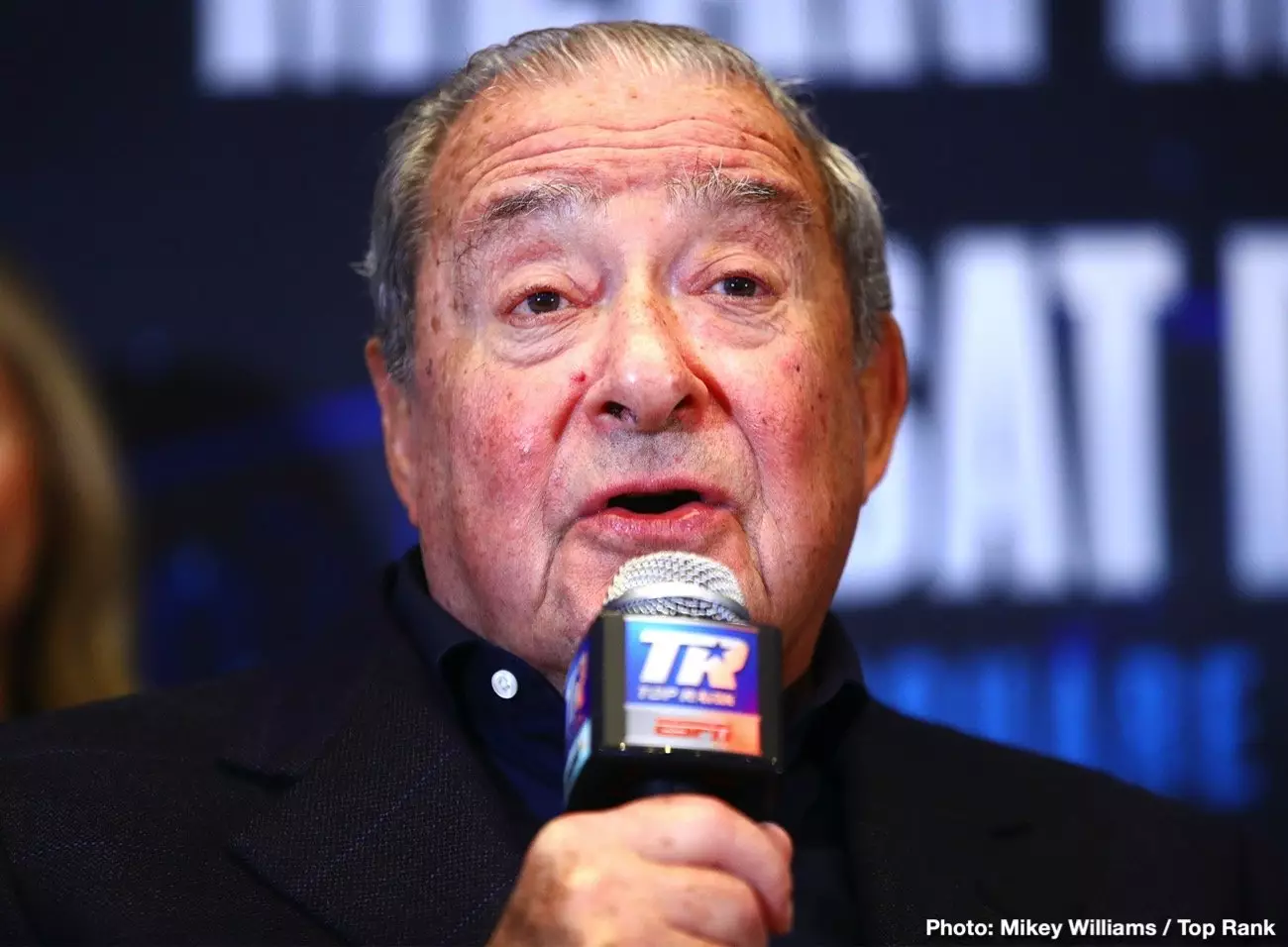The boxing world is currently at a crossroads when it comes to the effective delivery of fights to fans, especially concerning the pay-per-view (PPV) model. Veteran promoter Bob Arum has expressed hesitance regarding the planned PPV for the upcoming bout between WBO light welterweight champion Teofimo Lopez and former IBF titleholder Subriel Matias. Arum’s reluctance stems from notable concerns surrounding piracy and a general lack of interest from fans, raising critical questions about the future of boxing promotions in a rapidly changing media landscape.
Arum’s comments highlight a growing issue: the rampant piracy undermining the traditional PPV model. The prevalence of illegal streaming services has significantly blurred the lines of how fans access boxing bouts. As Arum pointed out, the real concern is that the reported viewership numbers no longer reflect reality. When fights are pirated, the estimations of their popularity decline, creating a false narrative about demand. While piracy certainly affects the gross revenue potential of PPV events, it’s essential to recognize that the absence of interest is a substantial factor, preventing undercard and less-publicized fights from drawing reasonable audience numbers.
Teofimo Lopez’s marketability has been questionable since his loss to George Kambosos Jr. The former two-division champion has not managed to regain the momentum needed to captivate a broad audience. Despite holding a championship title, Lopez has suffered subpar performances that failed to impress the boxing community. This unfortunate pattern raises an essential point: a fighter’s connection with fans profoundly impacts their draw, independent of titles and accolades. The question remains—can Lopez bounce back, or is his opportunity to be a headliner fading?
In light of these challenges, Arum has suggested moving the fight to a standard ESPN broadcast rather than a pay-per-view model. This alternative approach could allow the fight to reach a wider audience without the barriers posed by the paywall. Regular ESPN access might reignite interest in Lopez’s career, giving him a chance to rebuild his image and fan base. Promoting bouts in accessible formats serves not only to enhance visibility for struggling fighters but can also stabilize a promotion’s brand reputation.
Arum’s critique of the current PPV landscape offers an opportunity to reflect on the changing nature of boxing promotions. Traditionally, only marquee matchups with established stars commanded PPV status. However, the trend of placing a variety of fights behind a paywall—regardless of their marketability—has diluted the efficacy of the medium. Promoters must be cautious about prematurely placing up-and-coming fighters on PPV cards before they cultivate a dedicated fanbase, as seen in the case of Gervonta Davis, whose early PPV ventures yielded disappointing numbers due to target audience disconnect.
Ultimately, the fate of Lopez versus Matias may not just hinge on the fighters’ skills but also on strategic choices made by promoters like Arum. Emphasizing accessible broadcasting methods over outdated PPV practices could be pivotal for the sport’s health and growth. As boxing enthusiasts, we must advocate for structures that provide fighters with the means to develop meaningful connections with their audience, ensuring that future generations can continue to engage deeply with this storied sport. Thus, reconsidering the model of delivering fights to fans could be the key to revitalizing boxing’s appeal.


Leave a Reply